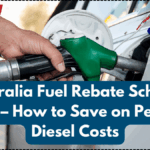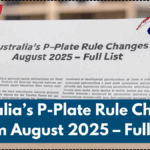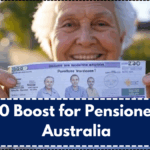The government has officially confirmed the Australia Petrol Price Cap Plan 2025, a much-anticipated measure that promises immediate fuel price relief for drivers across the country. In response to relentless global oil price hikes and increasing pressure on household budgets, this national price cap aims to stabilize costs at the pump and protect everyday Australians from future fuel shocks.
This move follows months of consultation between federal policymakers, energy economists, and fuel suppliers. The plan sets a regulated maximum price for unleaded and diesel fuels, preventing extreme fluctuations caused by international markets or domestic shortages. The goal is simple: keep transport affordable for everyone, from solo commuters to long-haul truckers.
With fuel being a key driver of inflation, this cap could have a broader impact on reducing transport and logistics costs across the economy.

What Is the Australia Petrol Price Cap Plan 2025?
The Australia Petrol Price Cap Plan 2025 will impose a regulated ceiling on petrol and diesel prices, enforced nationally. This means fuel stations cannot charge above the government-approved maximum price per litre. The cap will be reviewed quarterly to reflect global fuel trends while shielding consumers from spikes.
The price ceiling will apply to:
-
Regular unleaded petrol (91 and E10)
-
Premium unleaded fuels (95 and 98)
-
Standard diesel and biodiesel blends
This move is expected to provide rapid and reliable fuel price relief for drivers, especially in remote and regional communities where fuel costs are often higher.
Projected Impact on Fuel Costs
Initial projections show how much drivers could save under the new capped system. Based on current data, here’s a comparison between recent national averages and proposed cap rates:
| Fuel Type | Average 2024 Price (¢/L) | Capped 2025 Price (¢/L) | Estimated Savings per Litre |
|---|---|---|---|
| Unleaded 91 | 215 | 185 | 30 |
| Premium 95 | 235 | 200 | 35 |
| Diesel | 225 | 195 | 30 |
| Premium 98 | 245 | 210 | 35 |
These numbers suggest weekly savings of $10–$25 for average drivers, and even more for those in logistics or agriculture, where high fuel usage is the norm.
Who Benefits from the Petrol Price Cap?
The Australia Petrol Price Cap Plan 2025 is expected to benefit a wide cross-section of Australians, especially those hardest hit by rising living costs. Key beneficiaries include:
-
Daily commuters driving long distances to work
-
Small businesses operating delivery vehicles
-
Rideshare and taxi drivers
-
Farmers and tradespeople using diesel-powered machinery
-
Regional residents paying inflated local pump rates
Beyond individuals, the cap also promises fuel price relief for industries that rely on fuel-intensive operations, helping control prices across food delivery, freight, and even air transport.
When Will the Cap Take Effect?
The federal government has confirmed that the Australia Petrol Price Cap Plan 2025 will begin implementation on 1 November 2025. Fuel retailers will have a 30-day adjustment period to align with the new price structure. Enforcement will be handled by the Australian Competition and Consumer Commission (ACCC), which will monitor compliance and penalize violations.
Fuel stations found to exceed the cap may face fines, license suspensions, or other penalties. An online reporting system will allow the public to flag any breaches.
Conclusion
The Australia Petrol Price Cap Plan 2025 is a major step toward economic stability and consumer protection. By locking in fuel prices, the government is ensuring that Australians aren’t forced to choose between filling up their car and buying groceries. This policy offers more than just short-term fuel price relief — it creates a predictable environment for drivers, families, and businesses alike. If implemented successfully, it could serve as a long-term framework to safeguard against future fuel crises.
FAQs
When will the Australia Petrol Price Cap Plan 2025 start?
The official start date is 1 November 2025, with a 30-day compliance window for retailers.
What types of fuel are included under the price cap?
The cap includes unleaded 91, E10, premium unleaded (95/98), and diesel products.
Will this cap apply to rural fuel stations?
Yes, all fuel stations across Australia must comply, including those in rural and remote areas.
How will the cap offer fuel price relief?
It sets a strict upper limit on fuel costs, helping drivers avoid price surges caused by global oil volatility.
What should I do if I see fuel prices above the cap?
You can report price violations directly to the ACCC via their online consumer complaint system.
Click here to know more.



